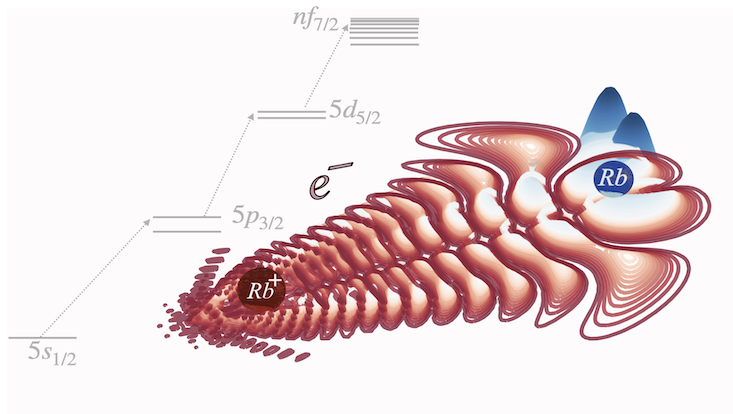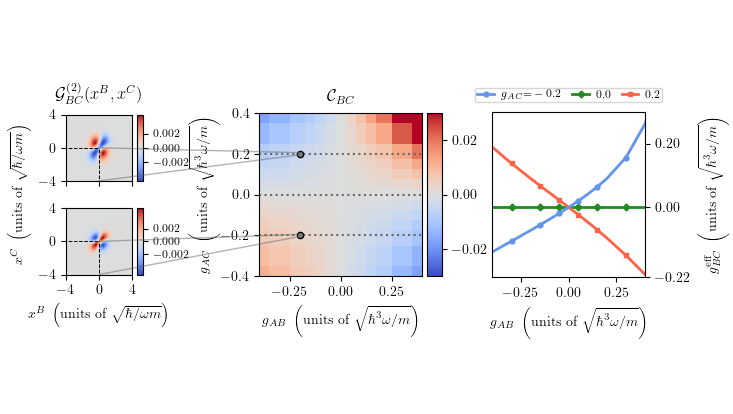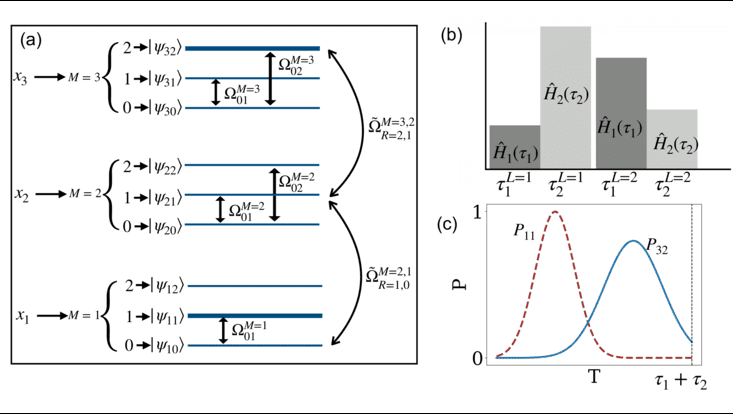Quantum Physics
High Precision Spectroscopy of Trilobite Rydberg Molecules
10 June 2025

Photo: AG Schmelcher
We are happy to announce that our latest work, together with collaborators in Dresden and Kaiserslautern, has achieved a milestone in probing fundamental interactions in ultracold Rydberg matter. Using high-precision, three-photon photoassociation spectroscopy, we are able to study Rubidium-87 trilobite Rydberg dimers with an unprecedented spectroscopic resolution of 10^(-4), establishing new benchmarks for testing advanced theoretical models.
This study, published as a cover article in the reputed Physical Review Letters [1], and featured in the Physics Magazine [2] underscores a crucial aspect of modern physics: extracting detailed information about the structure of matter and the underlying forces from high-precision scattering experiments. While high-energy particle accelerators are often used in high-energy physics, probing the microscopic properties of matter at ultracold temperatures requires intricate spectroscopic techniques. In the case of trilobite molecules, the binding mechanism is rooted in the low-energy scattering of a Rydberg electron off a ground-state atom. By meticulously measuring these molecules, scientists can gain direct insight into fundamental electron-atom interactions and spin effects at energy scales that are otherwise challenging to access.
A central innovation in this work was the application of a spin-coupled Green’s function approach, developed by Matt Eiles (co-author from MPIPKS Dresden), which overcomes longstanding convergence challenges in modelling these weakly bound states. The theoretical framework closely matches the experimental vibrational spectra, providing deep insights into the molecule’s structure. Most notably, the large binding energies observed are primarily determined by low-energy S-wave electron-atom scattering, enabling the researchers to extract the scattering phase shifts and scattering lengths with unprecedented precision at energy regimes typically inaccessible with free electrons.
The highly sophisticated experimental efforts were carried out under the guidance of Herwig Ott (RPTU) at Kaiserslautern, whereas the theoretical analysis was done at our group in Hamburg and MPIPKS Dresden. This collaboration exemplifies the powerful synergy between cutting-edge experiment and theory, across the German Rydberg physics community.
Publication:
M. Exner, R. Srikumar, R. Blättner, M. Eiles, P. Schmelcher, H. Ott
"High Precision Spectroscopy of Trilobite Rydberg Molecules"
Physical Review Letters 134, 223401 (2025)
"Trilobite Molecules Measured"


